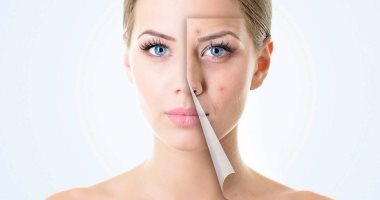Chemical peeling is a procedure in which a chemical solution is placed on the skin to remove the upper layers of it, and the skin that grows again is usually smoother in the case of light or medium peeling, it may be necessary to undergo this procedure more than once to get the desired results.
According to the website, mayoclinic Chemical peeling is used to treat wrinkles, skin discoloration and scars, which are usually in the face and can be used alone or with other cosmetic procedures. longer to recover.
Why is a chemical peeling done?
Chemical Peel is a procedure used to resurface the skin. Depending on the problem you want to treat by undergoing surgery, you will choose the degree of depth of chemical peel from the following options:
– Light chemical peeling, light chemical peeling (superficial) removes the outer layer of the skin (epidermis), and is used to treat fine wrinkles, acne, uneven skin color and dryness, and you can perform light peeling every two to five weeks.
Medium chemical peels, medium chemical peels remove skin cells from the skin and from some areas in the upper part of the middle skin layer. It is used to treat wrinkles, acne scars and uneven skin color, and you may need to repeat the procedure in order to achieve or maintain the desired result..
Deep chemical peeling, a deep chemical peel removes skin cells to a more profound degree, and your doctor may recommend it in order to remove deep wrinkles, scars or precancerous cells, you will not need to repeat this process to get its full effect.
Chemical peels cannot remove scars, deep wrinkles, or tighten loose skin.
Chemical peels can cause various side effects, including:
Skin redness, flaking and swelling The natural recovery from chemical peeling leaves traces like redness of the treated skin and the redness may persist for a few months after a medium or deep chemical peel.
Scarring. In rare cases, a chemical peel can cause scarring, usually on the lower part of the face. Antibiotics and steroid medications can reduce the appearance of these scars..
Changes in skin color. Chemical peels usually cause the skin that has undergone this treatment to be darker than usual (hyperpigmentation) or lighter than usual (hypopigmentation). Hyperpigmentation is more common after a superficial peel, while hypopigmentation is more common after Deep peeling.
Infection. A chemical peel may cause a bacterial, fungal, or viral infection, such as an outbreak of herpes virus, a virus that causes cold sores..
Heart, kidney or liver damage, carbolic acid (phenol) is used in deep chemical peels; This can cause heart muscle damage and irregular heartbeat, and phenol can damage the kidneys and liver. To limit exposure to phenol, a deep chemical peel is performed one section at a time, at intervals of 10 to 20 minutes..
Light chemical peels improve skin texture and color and reduce the appearance of fine wrinkles. Results are weak at first, but improve with repeated treatments. If you perform a medium chemical peel, the smoothness of the treated skin will increase significantly, and after a deep chemical peel, you will notice a significant improvement in the look and feel of the treated areas, but the results may not be permanent. Over time, age and new damage caused by sun exposure can lead to the appearance of new lines and discoloration of the skin..
It is reported that the new skin becomes temporarily more sensitive to the sun with all types of peeling. Talk to your doctor about how long you should protect your skin from the sun.






